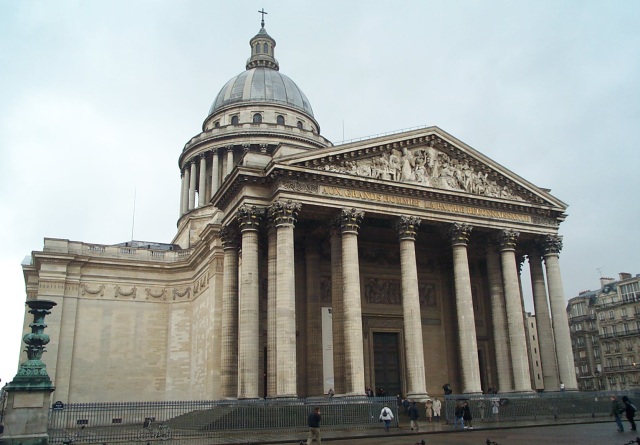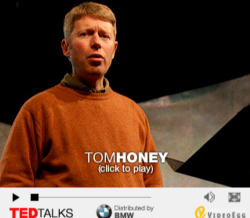In a nutshell, this is how I would describe the direction I felt Vosper
is taking us as a church when I finished reading chapter six. At the beginning
of the book I understood the author's purpose was to forge a new theology
and a way to live authentically in community for liberal Christians.
As much as I admire her purpose and efforts I am currently disappointed
in where Vosper seems to be taking her hopeful readers.
She seems to do a better job of critiquing traditional Christianity and
even liberal faith than she is of building something credidible to take
its place.
I believe Vosper "glorifies" the process of being on a journey
to something new and better, but really has no idea of where she is heading.
If she were unique in this quest, I would grant her some leaway. But many
have stood where she stands and she has many examples to consider from
the past if she were interested in making the effort to consider them.
Alas she does not.
Vosper seems enchanted with newness - a complete break with the past -
in a way that makes me wonder how well she knows church history and the
misguided attempts of many who have preceeded her.
I find her failure to respect Christian tradition and the development of
Christian doctrine - to be unfortunate at best; and quite dangerous at
worst.
If I were to present my argument in one sentence it might look something
like this:
Be careful when you set out on a course to create a church without theism
and a Christian community based essentially on human values. It has happened
before and the results are dubious. Here an example to make my point.
 A Message from History - the Pantheon in Paris A Message from History - the Pantheon in Paris
Last May, Marlene and I visited Paris. One of our stops was the Pantheon
located on the left bank, with the Sorbonne to one side and Luxembourg
Gardens to the other.
For those who would like to read more about this beautiful building, click
this link:
http://en.wikipedia.org/wiki/Panth%C3%A9on
The Pantheon is considered by France to be "The Temple of the Nation"
and is dedicated to the memory of some of its greatest modern heroic figures.
The Pantheon has the look of a church (especially parts of early construction
in the mid-18th century.) Constructed at first to serve the spiritual needs
of the aristocracy - it evolved, over time, to become a post-revolutionary
monument to reason and other human values. Those buried in the crypt of
this immense edifice are secular "saints" such as Voltaire, Rousseau,
Victor Hugo, etc. who have contributed to national glory through the great
humanistic values they espoused such as philosophy, political science and
literature.
The Pantheon evolved from Christian church to a "secular/pagan"temple
(while the Pantheon in Rome evolved from pagan temple to Christian church.)
Why do I choose the Pantheon as a cautionary image from history? Because
I am concerned about what it represents. Those who founded it were Christians
- albeit aristocrats. After the Revolution (1789) when the Ancien Regime
- including both church and state - were discredited the desire was to
reject the "God" of a hated past and to honour instead the values
of liberty, equality and fraternity. These were the popular, humanistic
values that France helped to bring to birth in modern Western history.
First came the Deists who semi-rejected a transcendent Being. Then came
the Atheists who totally rejected the idea. Still later came a re-invigorated
but dis-established church. Eventually, however, all links between humanism
and theism were severed, and the Pantheon became a monument to human achievement.
When transcendent values are rejected and replaced by humanistic ones,
the end result of such a choice is clear. The Pantheon is a beautiful building,
but it is no longer a church. It is no longer dedicated to a meaning system
that transcends and critiques humanistic values.
That, I believe, is the kind of "un-church" Vosper is building,
no matter what good intentions may inspire her project.
To those who would seek to build a new liberal community on humanistic
values, while rejecting transcendent ones, I offer this lesson from history.
When you build your community on human values, however honourable, the
end result will not be a church. When you don't consider the direction
in which you are heading, any road will get you there.
I like what Vosper has to say about the stages of faith occuring in normal
human development.
In spite of the fact that this assumes individuals and their institutions
share a common development process, she deftly unpacks the basic theory
behind James Fowler's classic study on the "stages of faith development."
Let me briefly trace the stages Fowler outlines in a study done several
decades ago and which he published as a book with the title: "The
Stages of Faith"
1. Intuitive-Projective
2. Mythic-Literal
3. Synthetic-Conventional
4. Individuative-Reflective
5. Conjuntive
6. Universalizing
Fowler's Stage One: Intuitive-Projective
In the early childhood stages of faith development young children have
no difficulty integrating the tangible with the intangible; they have no
difficulty assimilating fantacy with religious belief.
Most children growing up through age seven readily inhabit the worlds of
myth and reality concurrently. They believe both worlds to be true. Santa
Claus and Jesus are both equally credible to them.
Stage Two: Mythic-Literal
In time, however, the seven year-old child begins to recognize that "some
things really don't exist" as he/she once thought they did. They begin
to understand them as constructs of the human imagination. Yet, children
of this age continue to accept and participate in the practices, as well
as the inherited traditions of their parents and teachers, all-the-while
harbouring some doubt about it.
Children of this age-group grow skeptical that Santa exists. That may also
be true about Jesus. But for the time being they accept what the authorities
closest to them want them to accept. Christian parents deny the existence
of Santa Claus, but support the truth that Jesus represents.
Stage Three: Synthetic-Conventional
By now the child is eight to ten years of age, and with time, the desire
is reduced to conform to the wishes of authority. For many in this age
group, what is authentically believed must be integrated to the real world.
Questions about God, Jesus and the church become more frequent.
It is also important to note that at this point chronological age and faith-stage
parallels come to an end. Some people get stuck here, both psychologically
and/or spiritually. While they continue to grow in years their spiritual
growth may be stunted.
Stage Four: Individuative-Reflective
We have now come to the teen years when unabashed "critical thinking"
confronts inherited reality. No longer does the young person simply accept
what they are told. In fact, they are more likely to reject it. Personal
questioning threatens past views of the truth; much to the chagrin of some
parents and other "authorities."
This is both a necessary and a difficult period of faith development for
a young person. The tradeoff tends to be "isolation & loss"
vs. "safety & security." The young person may choose to think
independently, but this can result in significant losses as well.
Most parents can attest to children that are moody, angry and ambiguous.
It can be a difficult time for everyone.
Stage Five: Conjunctive Faith
Life is most uncomfortable. At some point resolution seems more attractive
than continued uncertainty and unsettled relations.
The need for intentional decisions and a desire for resolution concerning
personal beliefs confront the young adult. "Will I choose 'maverick'
status?" (or) "Will I 'compromise' when personal views bump up
against inherited understandings?"
Stated in terms of faith development, do we focus on being "perpetual
seekers" or "truth finders?" Do we continue on an open-ended
faith journey, or do we determine we need to reach substantive conclusions.
Do we choose to reclaim and reframe many of the myth-symbols that formed
us? or do we strike out on our own?
Marcus Borg calls this a time of "post-critical thinking." Others
have called this a time of "second naivete"
It should be noted that these times of "critical thinking" and
"post-critical thinking" can be postponed. While some engage
these formidable challenges in adolescence, others decide to enter the
fray later in life.
Stage Six: Universalizing Faith
Some people conclude that the community (marriage, family, faith group)
with which they have lived can no longer sustain them spiritually. A severe
personal and community crisis may occur. Commitment to another spiritual
community (marriage, faith group, etc.) may result.
Some choose to walk a'less travelled spiritual path' and are embraced by
new families.
For all the pain involved in such transitions, real payoff can result -
such as a deeper satisfaction with one's new circumstances and a more profound
universal compassion.
Personal Queries Emerging from this Chapter
1. Vosper replaces theistic with humanistic values. I ask: If everyone
is free to 'do what is right in their own eyes' and there is no moral/spiritual
arbiter beyond the self, will not chaos reign? Is this a good or a bad
thing?"
2. Vosper does not like the way Borg tries to help us move from "pre-critical"
to "post-critical" thinking. She propoes a clear break with the
past and starting afresh.
Borg opposes "throwing out the baby with the bath-water" and
seeks a compromise between old and new ways of thinking and being. Is it
ever truly possible to begin again in the way Vosper suggests?
3. Vosper expresses a certain pastoral concern for those "bogged down
in earlier stages of faith development" but do I sense a condescension
in her for those "lacking the spiritual maturity" she and her
supporters possess?
4. Vosper proposes some "simple language shifts" for the spiritually
advanced:
a. Delete "In Jesus' name, Amen" - from our prayers - we no longer
need Jesus as an intermediary - the final breakdown of the old sacerdotal
system has arrived
b. Stop using "we are superior" language! - it demeans the "beneficiaries
of our charity" - missionary hymns imply "vestigial cultural
arrogance"
5. "The church's new mission will be to develop spiritual awareness
in individuals and communities around the world" (p. 281)
I ask:
- does this hold up as a realistic "mission statement?"
- is this not rather a foggy "motherhood statement?"
- where is the substance & intentionality she advocates?
- is this not another form of spiritual arrogance under the guise of spiritual
enlightenment?
(Discuss in plenary)
Revisiting the history of the Pantheon in Paris -
Is Vosper aware of the implications of the journey upon which she is taking
us? Are we?
|

 A Message from History - the Pantheon in Paris
A Message from History - the Pantheon in Paris